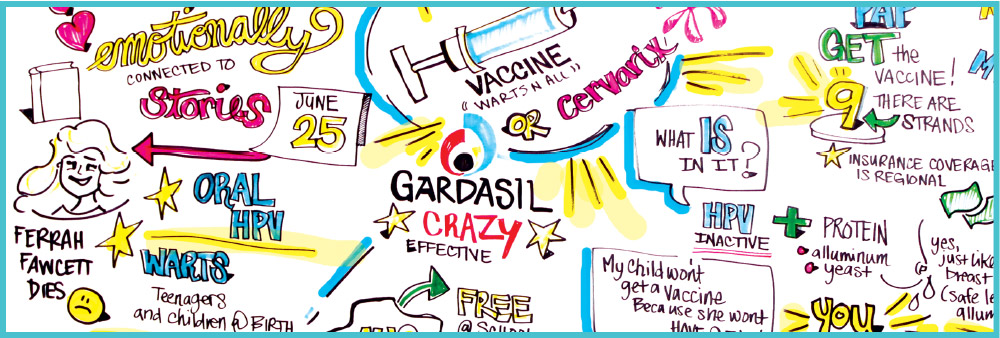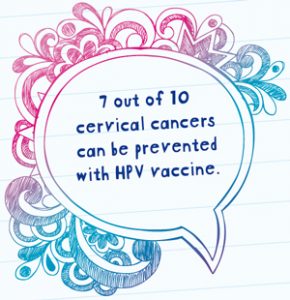HPV Vaccine – Gardasil, Cervarix

Human Papillomavirus (HPV) is a nasty virus. Actually, it’s a group of 150+ different related viruses (called types or strains).
Papilloma means wart. HPV can cause warts to appear in bumps–raised or flat, small or large–and sometimes in formations that can look cauliflower-like. These warts love to hang out in mucous-membrany areas such as the mouth, throat, genitals, and anus, but it’s not at all uncommon to find them on your hands (common warts) and feet (plantar warts), as well. In fact, sixty of the 150+ types cause hand and foot warts.
My guess is you’ve had one. Am I right? I have. In fact, I get them on the soles of my feet all the time.
HPV is so common that nearly all men and women get one type at some point in their lives. Don’t freak out.
So how do you get it?
You get warts through other people who have warts—skin-to-skin contact. Most often the spread comes from intimate contact. And in many cases, the infected person doesn’t even know they have it because they show no signs or symptoms. Sometimes the symptoms don’t develop until years after being infected.
So, why is it important for me to talk about warts?
Some types of HPV can lead to cancer. Both men and women can get HPV-related cancer of the mouth, throat (base/tongue/tonsils), anus, and rectum. Men can get penile cancer. And women can get cervical, vaginal, and vulvar cancer from HPV.
Good news! We have vaccines for that!
I wouldn’t be The Vaccine Mom if I didn’t talk about the vaccines we have to prevent against types of HPV that most commonly cause cancer.
Gardasil (also known as Gardisil or Silgard) is a recombinant HPV vaccine protecting against HPV types 6, 11, 16, and 18. (Gradualism may have cross-protection from other types.) It’s approved by the FDA for both men and women age 9-26 for the prevention of genital warts, anal cancers, and anal interepithelial neoplasias. It is also approved for the prevention of cervical cancer and cervical and vulvar interepithelial neoplasia in women.
Gardasil 9 protects from HPV types 6, 11, 16, 19, 31, 33, 45, 52 and 58. It’s approved by the FDA for ladies aged 9 to 26 and men and boys aged 9 to 15.
Cervarix prevents from HPV types 16 and 18 and possibly 45 and 31 (clinical trial). It’s FDA approved for ladies age 9-25 for the prevention of cervical cancer and interepithelial neoplasia.

None of the three vaccines have yet been shown to protect against diseases caused by pre-existing HPV infections.
All three of the vaccines can be used for routine vaccination.
Vaccine side effects:
All three vaccines are FDA-approved and considered to be quite safe. As with any vaccine, there are mild side effects such as pain and redness at the injection site, headaches, and stomach aches. Allergies to latex or yeast may cause a vaccine-related allergy.
The more serious side effects have been reported to VAERS and are by majority shown not to be vaccine-related. Fatalities from vaccination are unfounded.
On another note, all three vaccines do not cause infertility.
When your older children get the HPV vaccine their bodies make antibodies to fight off the virus should it enter his/her body. This gives a strong and long-lasting protection. The great thing about this vaccine is that after your child has received the 1-2 boosters (depending on age and vaccine type), research shows that the antibodies formed from the vaccine last a VERY long time.
Long-lasting antibodies, high safety profile, and cancer protection…this vaccine is a big win for science and for our children!!
Sources:

